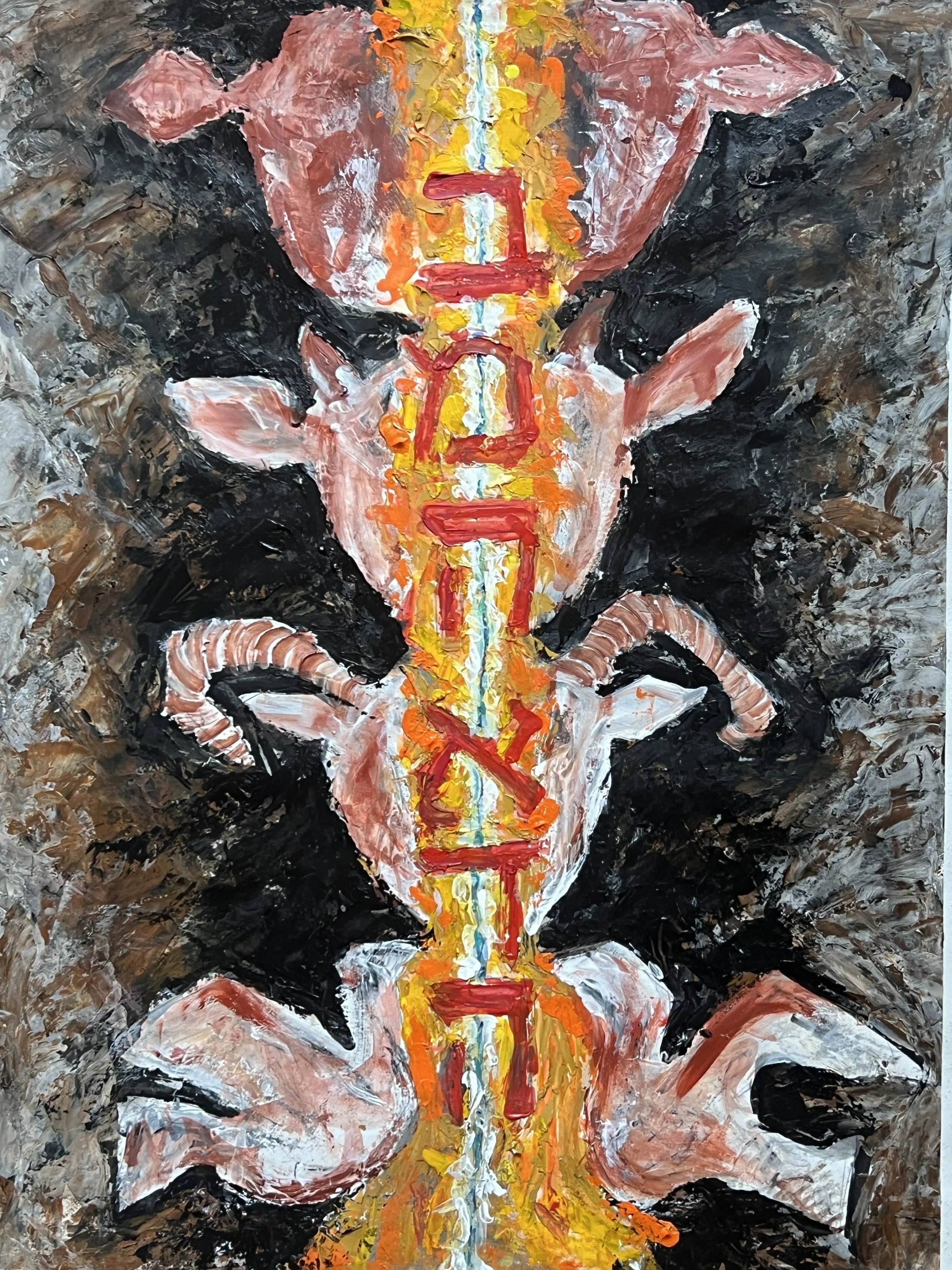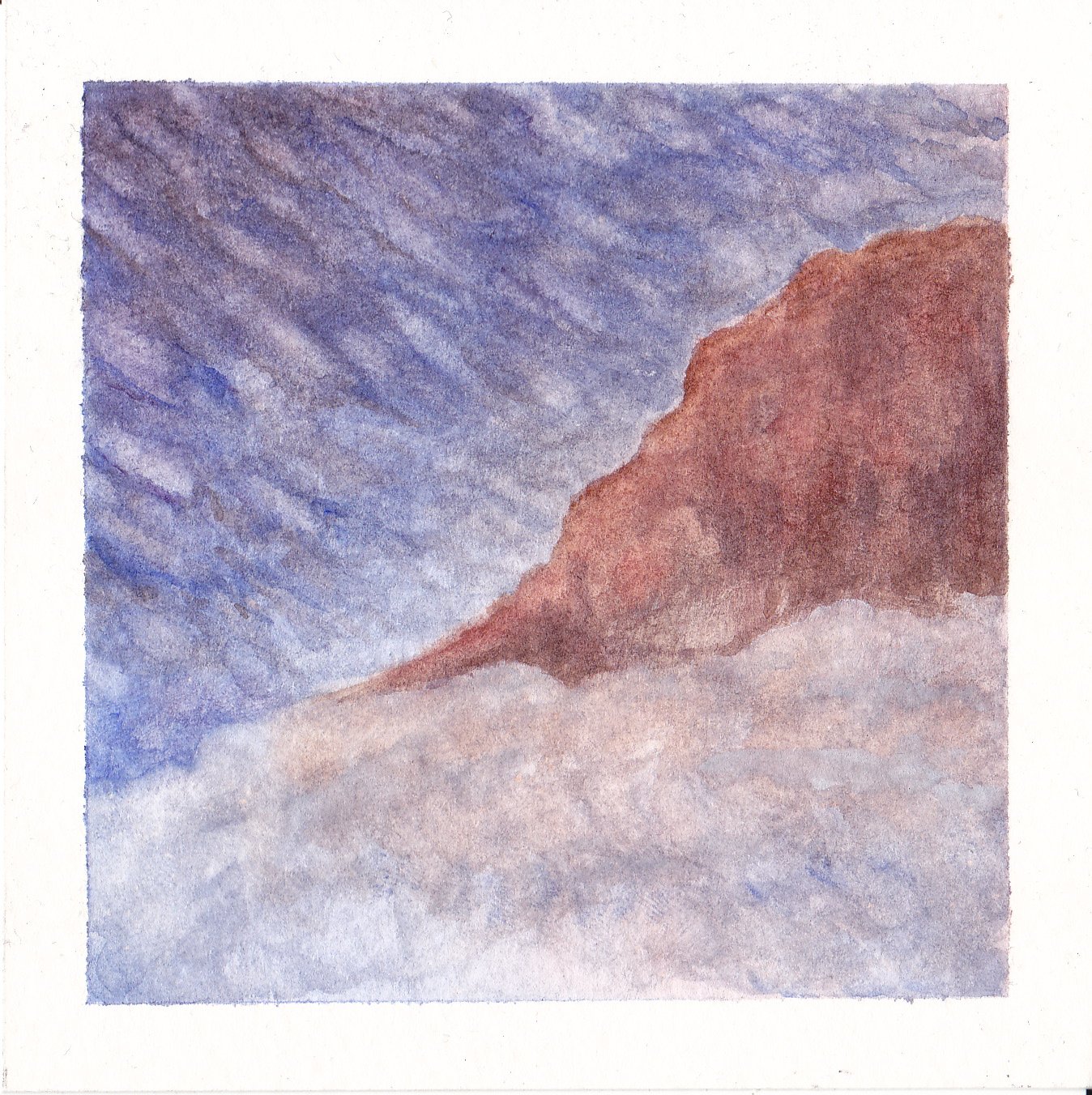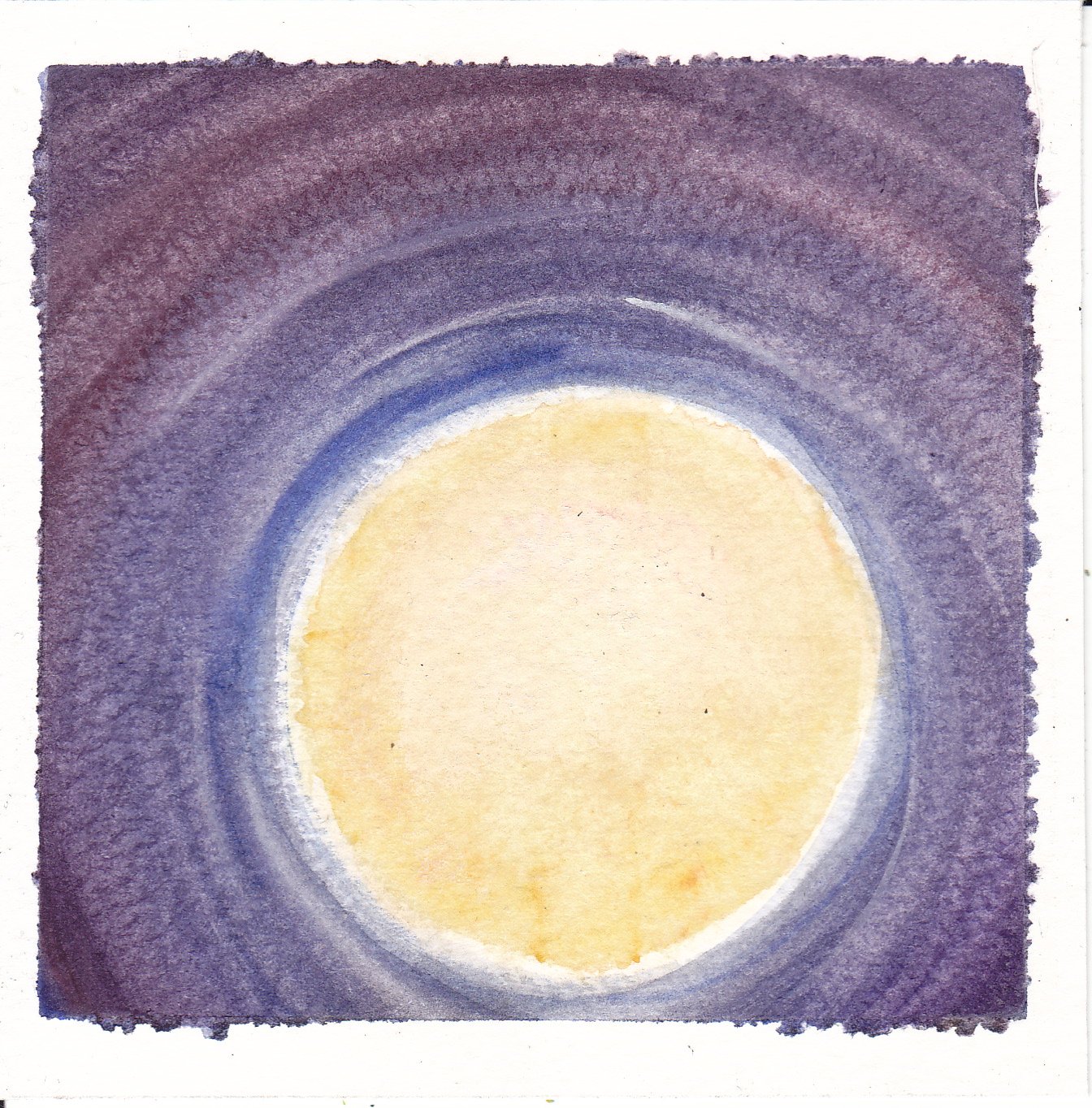Spirituality Informed
“How will I know?” (2025, Nov 2; 18” x 24”, acrylic)
Each time I re-encounter the story of the Brit Bein HaBetarim (“Covenant of the Pieces” [B’resheet 15.8-11]), I am surprised. The bisecting of animals followed by a lapid esh (flaming torch [15.17]) passing through the parts signifies God’s commitment to fulfill the promise to Avraham. The scene is brutal and awesome all at once - and in response to Avraham’s request for proof, “b’mah eidah?” - “How will I know?” (15.8).
Because I periodically forget about this story, I painted it - the plea embedded in flames. The specific animals foretell the Temple sacrifice but as I rendered them, I was struck by additional possible meanings. The heifer, specifically the red heifer, is needed for a ritual that renders the impure pure but renders the pure impure (Bamidbar 19.2-6). The goat, that is the scapegoat, for the ancient Yom Kippur ritual of atonement (Va’yikrah 16.21-22). The ram is the replacement that appears just in time for the akedah (binding of Isaac [B’resheet 22]). The birds are reminiscent of the raven and dove released by Noah searching for dry land after the Flood (B’resheet 8.6-12). As I painted, I wondered about how these symbols offer antidotes for doubt, remedies for uncertainty.
For doubt to transform into curiosity rather than shrink into fear, this story suggests a combination of actions and affirmations - embracing paradox (“I know I may never fully know”), extending forgiveness (“Uncertainty is part of being human”), fortifying faith (“I can take steps not knowing where the path leads”), and seeking assurance (“I can check that the path is solid”). No single cure-all but a titrated compound of ingredients to meet current needs.
Ayeka (2012)
I began by focusing my attention on this Hebrew word that I wrote out. “A’yeka” means “Where are you?” and is the first statement that God directs towards a human in the book of Genesis. What is interesting about this statement, is that in Hebrew, there is another word that is more commonly used to ask where someone or something is – ma’tai. Scholars interpret the word a’yeka as a spiritual question, particularly because it was asked when Adam was hiding after eating from the Tree of Knowledge. In this sense, “where are you?” is not a question of physical location, but of spiritual and emotional presence.
I completed each piece on 4.5 inch (11.4 cm) square watercolor paper. I intentionally chose this small size in order to maintain my focus and to enable me to complete the image within an hour. After sitting quietly focused on the word, I waited until a particular color, shape or form came to mind. I then brushed clear water on the paper and began adding the initial colors. The paints would swirl and lose their defined form. Continuing in this way, I eventually created imagery that seemed to emerge from the lines and shapes on the paper. I reflected further on each image by writing a haiku.
Ayeka 1 (2012, Oct 14) storming all around secure mountain refuge place listening deeply
Ayeka 2 (2012, Oct 15) illuminated paths, caves carved over time solace, security
Ayeka 3 (2012, Oct 16) sacred well below searching for unformed forms waiting to reveal
Ayeka 4 (2012, Oct 18) wave is coming in showering color and ideas filling the unknown
Ayeka 5 (2012, Oct 20) standing at the Tree wisdom or life within reach ready and unsure
Ayeka 6 (2012, Oct 21) should be so simple trusting the well treaded path yet still, I stumble
Ayeka 7 (2012, Oct 23) peaceful observing distance provides perspective when's the time to move?
Ayeka 8 (2012, Oct 24) pale yellow light - still do swirls disturb its peace or is it causing swirls?
Ayeka 9 (2012, Oct 27) looking out from in bright moon beckons, "Look! See me!" I do and imagine
Ayeka 10 (2012, Nov 2) wondering what lies beyond the blocks wondering what lies right here within
Ayeka 11 (2012, Nov 5) floating layers shift moving, dodging, gliding by seeing what's around











